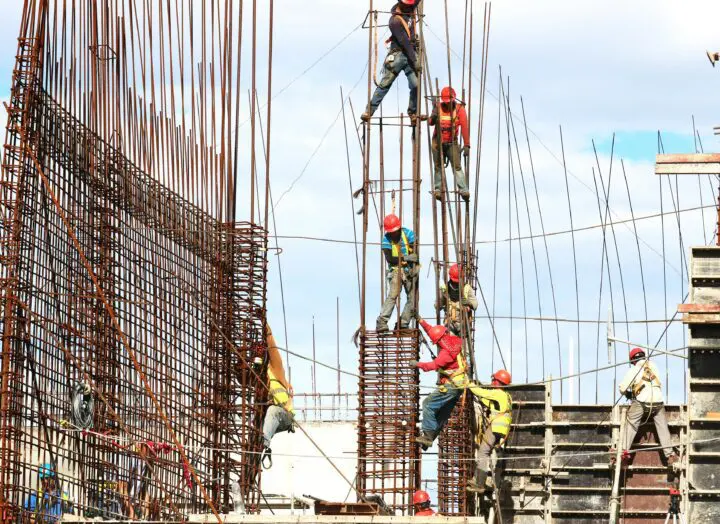Statutes of Repose Can Be Vital in Limiting Exposure
It seems that during each cycle of the state legislative sessions, efforts are made either to expand or reduce the business and professional liability exposures faced by construction‑related professional service firms.
Text
It seems that during each cycle of the state legislative sessions, efforts are made either to expand or reduce the business and professional liability exposures faced by construction-related professional service firms. In some instances, under the overall rubric of “tort reform,” efforts are made to redefine exposure and channel liability.
Some efforts are highly beneficial to the public and the profession. For example, a volunteer protection statute that limits the exposure of a licensed professional and the professional service firm can assist in having the best talent available to assist in an emergency or pro bono publico situation. Other efforts can raise the exposure of firms such as those that cap the liability of public entities in tort claim situations thus directing the aggrieved party to pursue an often unreasonable recovery against a firm providing services to the government. Some legislative initiatives are meant to provide a benefit to one group with only a minor impact on the rights of the public.
Some legislative initiatives are meant to provide a benefit to one group with only a minor impact on the rights of the public.
Enacting a reasonable statute of repose law that “absolutely” cuts off the rights of all parties to bring a legal action related to the improvement of real property is one such initiative. Certainty on the length of a window of vulnerability to lawsuits helps design firms understand and prepare for their possible exposure to claims. Such statutes rarely cut off a recovery by a client or facility user for harm actually caused by the negligent performance of professional services.
A leaking roof five or six years after a project is complete is usually caused by poor maintenance, the failure of a manufacturer’s warranty, misuse of the facility or unanticipated weather events. A bodily injury claim—the “slip and fall” accident—usually has nothing to do with the design or the construction of the facility if it occurs many years and thousands of hours of use after the facility is opened. With professional liability claims, valid claims that result in payments to correct harm usually occur shortly after the completion of a project.
With professional liability claims, valid claims that result in payments to correct harm usually occur shortly after the completion of a project.
Every jurisdiction in the United States with the exception of New York and Vermont has some sort of an automatic time limit on possible claims. But these statutes all differ in length, applicability, scope and strength.
Statutes of repose curtail “long-tail” exposure
Unlike a normal business entity, a professional service firm has continuing or “long-tail” exposure for harm to others that results from negligently performed professional service. The liability attaches along with the status as a licensed professional; the person who signs and seals the documents is usually personally at risk at least until the application of a statute of repose. While no professional wants to escape responsibility for harm caused by the professional’s negligent performance, having a legislatively established limit on when claims can be made means that a firm has a better ability to plan for its ongoing operations.

The certainty provided has an impact on firm activities ranging from the preservation of records to the planning for firm ownership transition. For instance, professional liability exposure continues after a merger, acquisition or dissolution of a firm; with a reasonable statute of repose, firms transferring the assets of the practice but retaining the liabilities, as usually is the case, know for how long they should plan to carry insurance protection for their past projects.
An “absolute” protection may not be certain
Frequently, statutes of repose do not apply to all causes of action against construction-related professional service firms, nor are all parties limited in their ability to take legal action against a firm. Governments routinely are given the opportunity to sue without restraint. In some states special contracts—those recognized as being “under seal” often have statutes of limitations that may extend to twenty years.
Increasingly, misrepresentation and fraud cases have been brought against design firms—especially related to green-design promises.
Statutes of repose should be as “absolute” as possible in limiting claims. A provision that, for example, exempts claims alleging “gross negligence” means that the plaintiff – whether the client or a third party – will simply get around the limitation by pleading that the harm was caused by gross negligence. Therefore, defense costs will begin to mount to defend against such an outlandish claim – or an even worse scenario may occur. In an earlier case, a court might have referred to the violation of a building code as constituting “gross negligence” by characterizing the action as a reckless disregard of a legal duty. Thus just about any claim against a design firm is no longer subject to a time limitation, irrespective of the date of harm.
In addition, many who bring claims against construction-related professional service firms have explored new causes of action or taken advantage of legislation establishing rights that might not be curtailed by a statute of repose that applies to the improvement of real property. Increasingly, misrepresentation and fraud cases have been brought against design firms – especially related to green-design promises. Laws that create liability for “deceptive practices” or that identify economic loss as a personal property right might not be subject to a statute of repose.
Contracts can change the applicability of statutes
Parties to a contract usually can choose the law by which the terms and conditions of the contract will be interpreted in any dispute between the parties. This means that a firm in a state with a reasonable and short exposure period for claims from the client could be subject to unlimited future exposure through the adoption of, for example, New York law.
In most states, the “private law” on which two parties to a contract agree can modify the applicability of a statute of repose. For decades the standard owner-architect agreement published by The American Institute of Architects contained a limitation of the architect’s liability to the owner resulting from a provision that preempted the application of the statute of repose by stating that the statute of limitations for claims (both breach of contract and negligence) began to run at the point of substantial completion of the project. Between the parties this essentially replaced whatever statute of repose was enacted by the state with a much shorter time period effectively reducing the project owner’s ability to bring a claim against the architect. After this provision was protested by owners, the 2007 version resorted to either an application of the statute of repose or ten years after substantial completion, whichever is less.
Many owners use provisions that keep the statute of repose from starting until harm is actually identified.
The concept of developing “private law” can go in the other direction as well. Many owners use provisions that keep the statute of repose from starting until harm is actually identified. This essentially replaces a short statute of limitations with a much longer limitation period that in reality means that the professional can be at risk in perpetuity.
All construction–related professional service firms should be aware of the statutes of repose that affect their practice.
Victor and CNA work with the AIA Trust to offer AIA members quality risk management coverage through the AIA Trust Professional Liability, Business Owners, and Cyber Liability Insurance Programs to address the challenges that architects face today and in the future.
More on Contracts & Professional Liability

Professional Liability Insurance Database
Professional Liability
Is Your Firm Eligible for a Premium Credit?
News ▪ January 2009
Straightforward Advice on Preserving Cash Flow
Professional Liability ▪ Retirement & Financial Planning ▪ Article